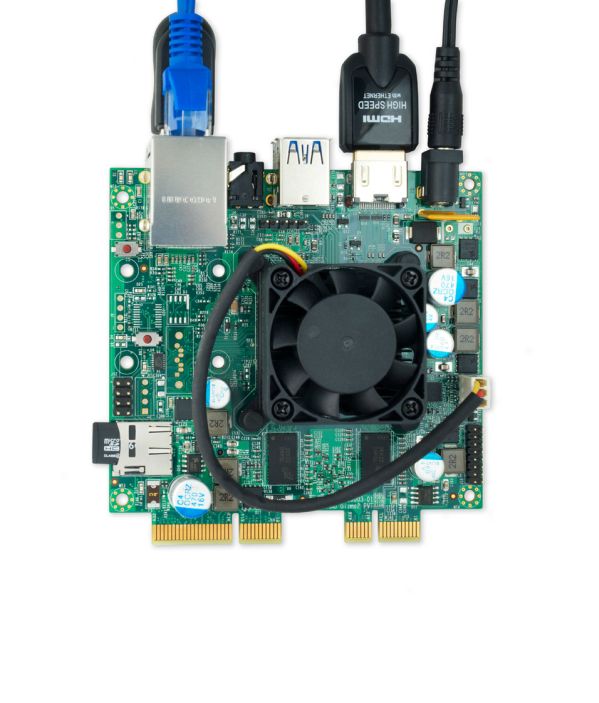Selling a small board with a powerful integrated processor started to be a thing and earlier this year Nvidia made inroads in the market with Nvidia Jetson TK1 development kit.
AMD now offers Gizmo 2, a second generation open source development board for embedded programmers, and one of the key differences from the Raspberry Pi and the Nvidia Jetson TK1 development kit is that it can run Windows Embedded 7 and 8. This is not all, as Gizmo 2 also runs TimeSys Embedded Linux and Qt UI loaded on uSD and Linux, Minoca and RTOS.
The Gizmo 2 board is based on an AMD Embedded G-Series SoC GX210HA, a 1GHz dual-core APU processor with a 9W TDP. This APU has AMD Radeon HD 8210E graphics, providing 85 GFLOPS performance and supporting DirectX 11.1, OpenGL 4.2x and OpenCL 1.2 APIs.
The board comes with HDMI video and audio out, 1GB DDR3 1600 memory, HD audio in/ out, mSATA/mini PCIe connector, microSD card slot, Gigabit Ethernet, two USB 2.0 and two USB 3.0 connectors and parallel processing and Error-Correction Code (ECC) memory support. If you are part of this embedded world you will like the fact that Gizmo 2 supports GPIO, ADC/DAC, PWM, I2C, SPI, USB, SATA and PCIe as well as microSD, HDMI, mSATA for SSD.
Gizmo 2 targets the Gizmosphare, a non-profit development board community. Some of the possible applications of this developers board include Digital signage, x86 set-top boxes (xSTBs), IP-TV, Thin clients, Jukebox, Information kiosks, home automation system, gaming machines (Vegas style), Point-of-Sale systems, media servers, robotics systems and more. AMD is doing quite well in this market and it has a lot of slot machines, military machines and medical powered by its embedded products.
AMD believes that Gizmo 2 can be used for embedded development, PC replacement, microcontroller applications, SMB storage, parallel processing, multicore engineering and Internet of Things (IoT) solutions, as well as many other areas where high input output rate is needed matched with great computational capabilities.
Since it is packed in a compact 4x4 inch board, needs only 9W and has good CPU and GPU, AMD hopes to sell a lot of them at $199.




